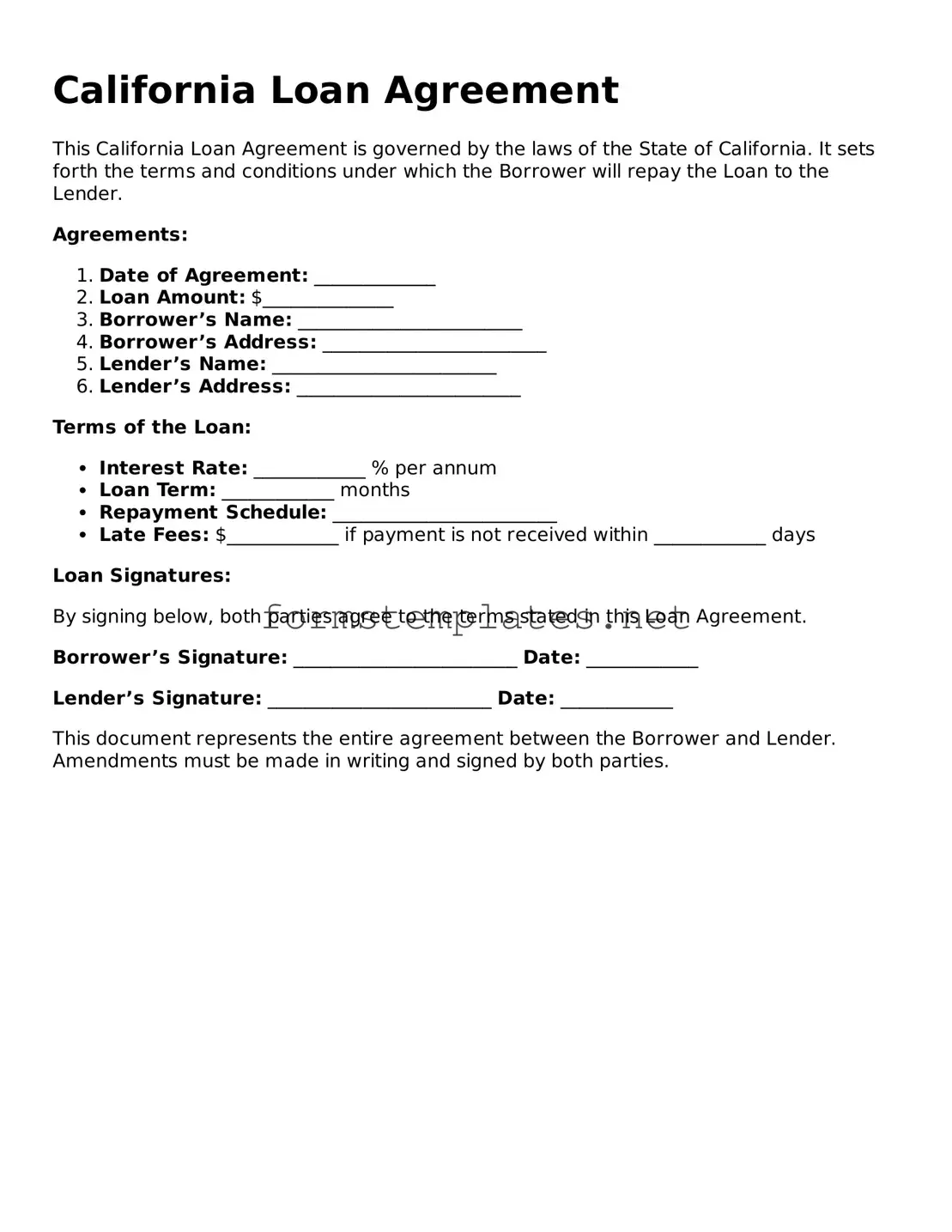California Loan Agreement
This California Loan Agreement is governed by the laws of the State of California. It sets forth the terms and conditions under which the Borrower will repay the Loan to the Lender.
Agreements:
- Date of Agreement: _____________
- Loan Amount: $______________
- Borrower’s Name: ________________________
- Borrower’s Address: ________________________
- Lender’s Name: ________________________
- Lender’s Address: ________________________
Terms of the Loan:
- Interest Rate: ____________ % per annum
- Loan Term: ____________ months
- Repayment Schedule: ________________________
- Late Fees: $____________ if payment is not received within ____________ days
Loan Signatures:
By signing below, both parties agree to the terms stated in this Loan Agreement.
Borrower’s Signature: ________________________ Date: ____________
Lender’s Signature: ________________________ Date: ____________
This document represents the entire agreement between the Borrower and Lender. Amendments must be made in writing and signed by both parties.
